Studio Recordings
| Record | Date | Catalogue | Song | |
|---|---|---|---|---|
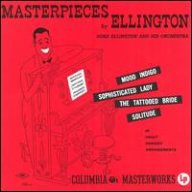 |
Masterpieces | 18th December 1950 | Columbia ML 4418 |
Solitude |
| Paul's first significant solo on record with Duke, Solitude was recorded in December 1950, shortly after Paul joined Ellington. The importance of this record cannot be overstated, being the first long-play Ellington release and one of the last to feature the classic Hodges/Brown/Greer line-up. Given the stories Duke told of Paul's sound when first joining the band, it's no shock to hear him sound Webster-like in this piece. One can, however, hear the strong hints of the unique styling all of his own he was to develop while with Ellington. | ||||
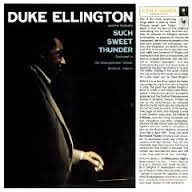 |
Such Sweet Thunder | August 1956 - May 1957 | Columbia 1033 |
Star Crossed Lovers and Circle of Fourths |
| It may, perhaps, surprise to list Star Crossed Lovers as a highlight of Paul Gonsalves, given the work of Johhny Hodges on this song. However, the importance lies in Paul's contribution leading the saxes in the bridge. His tone is pure yet fragile, strongly suggestive of the emotions Ellington was driving for. Circle of Fourths, to contrast, shows the technical skill of the man in all it's swinging glory. | ||||
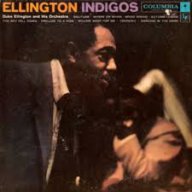 |
Indigos | September - October 1957 | Columbia CL 1085 |
Where or When |
| Indigos is one of the best of Ellington's 1950s efforts, packed full with exquisite arrangements of standards. In Where or When, we find Paul at his most lyrical, stating the melody with an almost vaporous ethereal tone, full of vibrato. A closing cadenza ends with the low Bb, softly sinking into the distance. | ||||
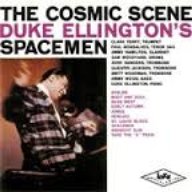 |
The Cosmic Scene | 2nd-3rd April 1958 | Columbia 1198 | Body and Soul |
| As one would expect for a standard tenor ballad, this take starts off at a typically slow tempo with all the expected lush subtones. It soon moves to something of a up-tempo romp, with Paul "finding time quote to Drumboogie, Peanut Vendor, Powerhouse and Hail to the Queen" (Scott Wenzel, 2006 liner notes addendum). Wenzel goes on to say "This underrated saxophonist's improvisations seem to just snowball from one idea to the next and seem to foreshadow what Coltrane would later fully accomplish." | ||||
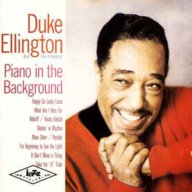 |
Piano in the Background | May - June 1960 | Columbia CL 1546 |
The Wailer |
| Not originally on the release of Piano in the Background, this piece can be found as a bonus track on recent CD versions. This a slinky, late night kind of tune. Paul comes in after the theme has been stated by the orchestra, with some suitably dirty blues lines, plying two choruses before the band kick back in. What makes this a favourite is the joy of hearing a slow sung blues of this type, Duke's piano comping so well with Paul. | ||||
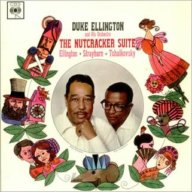 |
The Nutcracker Suite | May - June 1960 | Columbia 1541 | Peanut Brittle Brigade |
| The march from Tchaikovsky 1982 suite is renamed Peanut Brittle Brigade in what has become a hard-driving raucous piece. Paul enters the fray towards the end, with the trumpets blasting behind him, leading to a noisy cadenza that shows Paul as the perfect Ellington tenor. | ||||
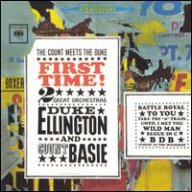 |
First Time! | May & June 1961 | Columbia CK 65571 |
Jumpin' at the Woodside |
| Taken from joint Basie/Ellington session, the exuberance clearly felt by all at the meeting of these two great bands is obvious. Paul solos on a number of tunes, but the sheer joy of hearing Paul wailing with his old boss and his current one is too damn happy-making to ignore. | ||||
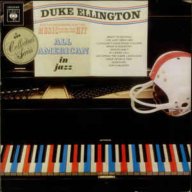 |
All American in Jazz | 2nd, 5th 23rd January 1962 | Columbia CL 1790 |
I've Just Seen Her |
| One of the great strengths of Gonsalves was his ballad ability. I've Just Seen Her, from the relatively poorly known All American in Jazz, shows Paul at his most passionate. As the song reaches it's climax the pleading, almost desperate cry from his horn sends shivers down the spine. In the liner notes, George Wein makes the comment "Musically, Paul's only press agent is his saxophone", alluding to his "self-effacing personality". | ||||
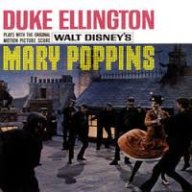 |
Mary Poppins | 6th-9th September 1964 | Reprise R 6141 |
Supercalifragilisticexpialidocious |
| Perhaps a surprising addition to the Ellington discography, the Mary Popins album was something of a critical success, at least today. In Super, Paul plays a blindingly fast series of choruses, showing his flashier side, ending with a typical 60s cadenza before the band swing back in at half time. | ||||
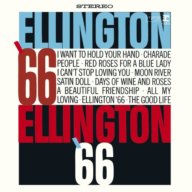 |
Ellington '66 | 19th & 20th January 1965 | Reprise | Days of Wine and Roses |
| Another striking ballad effort from Paul, in which he doesn't stray too far from the melody, allowing the listener to wallow luxuriously in his wide, lush, warm tone. The song is played through just the once, with typical Ducal voicings behind Paul - any more would have simply ruined the effect of a beautiful statement, honestly delivered. | ||||
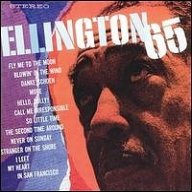 |
Ellington 65 | April 1965 | Reprise R 6122 |
The Peking Theme (So Little Time) |
| Another ballad tour-de-force from the album Ellington 65. This is a prime example of the mid-sixties Ellington sound; Paul plays with relatove simplicity, allowing his wonderful tone and phrasing to come to the fore as well as letting the melody speak for itself. | ||||
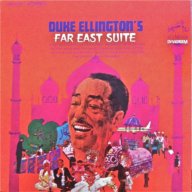 |
Far East Suite | 19th-21st December 1966 | RCA Victor RD-7894 |
Mount Harissa |
| Mount Harissa is taken perhaps the finest of the 1960s Ellington suites - the Far East Suite. Originally titled Knob Hill (and available as such on at least one live concert recording), it can really be thought of as a kind of amalgam of two themes - a haunting piano piece, giving over to a hard-swigging second section. As Neil Tesser says in his liner notes to the 1988 edition, " As a composition, it is oceanic; as a performance, merely unalterable." | ||||
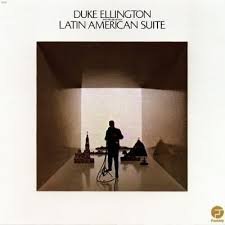 |
Latin American Suite | 5th November 1968 & 7th January 1970 | Fantasy 8419 | Brasiliance |
| Recorded in 1968, in Brasilliance Paul gives a bravura display, improvising on a Dm7-9 after the opening fanfares. His opening lick alone is worth the price of admisssion. | ||||
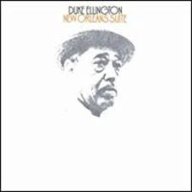 |
New Orleans Suite | 27th April & 13th May 1970 | Atlantic SD 1580 |
Portrait of Sidney Bechet |
| Famously, this song was originally planned for Hodges on soprano. His untimely death just days prior to the recording date meant the duties were taken by Paul on tenor, who plays with what Stanley Dance called a "tender sadness"; no doubt the kids in the band, as Duke would say, were all thinking of Johnny. That Paul could retain the "lyric flow" of Bechet in this performance makes it not only a touching tribute but a great performance. | ||||
Live Recordings
There is a plethora of live recordings of Paul Gonsalves with the Duke Ellington Orchestra, ranging in quality from those released on major record labels, to poor bootleg recordings. In this list, again non-exhaustive, we highlight important live performances.
| Record | Date | Catalogue | Song | |
|---|---|---|---|---|
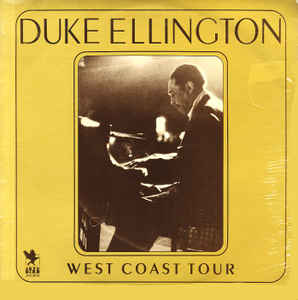 |
West Coast Tour | 6th & 30th June 1951 | Jazbird JAZ2010 | The Happening Diminuendo & Crescendo in Blue |
| The legendary 26-chorus Diminuendo and Crescendo in Blue from 1956 is well known. Incredibly, there are a few examples of Paul playing his "wailing interval" from earlier years, this being the earliest. As such, it is an important record of Paul's development of his approach to these kind of extended form solos. Here, the solo is a feels a little detached, a little more hesitant or stunted. What is apparent however, is the pleasure it gives to the crowd and the band - an interesting retrospective remonition to events a few years later. The Happening is an up-tempo Gonsalves feature that seems to have dissapeared from the book by the mid-50s. It opens with Paul "touching-off on the theme" on his own before the drummer kicks in. In many ways it's reminiscent of the kind of crowd-pleasing "Mutton Leg" work Paul had done with Basie. | ||||
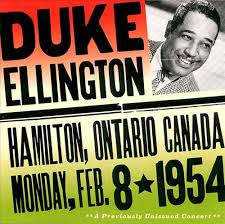 |
Live in Hamilton, Ontario Canada | February 8th 1954 | Music & Arts Programs of America 1051 | Things Ain't What They Used To Be Warm Valley |
| With Johnny Hodges away leading his own group, Paul Gonsalves is featured on a tune typically associated with the Jeep. On first hearing this version of Things Ain't What They Used To Be, a broad grin developed on my face - it's sounds like the band and Paul are having such fun. If nothing else, this is a great example of the road band of the time and a wonderful opportunity to hear Paul stretch out on a Hodges number. The responsibility for Warm Valley was passed to Paul when Jonny Hodges left the orchestra and shows well Paul's lyrical phrasing and lush tone. | ||||
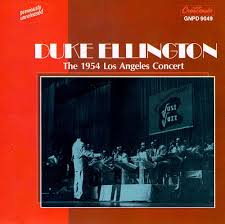 |
Los Angeles Concert | 13th April 1954 | GNP Crescendo 9094 | Take the A Train |
| Performances of A Train from this period are characterised by three-phase form; the orchestra initially stating the theme, Ray Nance and his floor show, followed by Paul's "rhapsodic extension". Fortunately, many examples are extant and the '54 LA example is a joyful experience. Paul comes in at the slow-tempo break for few choruses before the band kick it up to the faster ending. | ||||
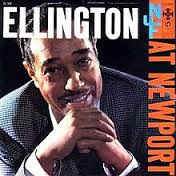 |
Ellington at Newport | July 7th 1956 | Columbia CL 934 | Diminuendo & Crescendo in Blue |
| No compilation of live performances would be complete without the classic 1956 Newport Jazz Festival recording of Diminuendo and Crescendo in Blue. Much has been written about the importance of this recording and sadly this one recording is too often the only credit given to Paul. It had in fact been performed a number of times before Newport, a few of which exist on record with Paul playing his "wailing interval". This particular night, Paul said there was "competetive feeling in the band", perhaps that had something to do with the energy in the group. Yes, there was the platinum blonde dancing, Jo Jones banging a rolled-up copy of the Christian Science Monitor on the side of the stage but it was all Paul, digging-in and constructing a solo whose form was damn near perfect. The rise to the climax of the solo is perfectly judged, peaking on that long high E flat, the come down equally so. The quality of the later rediscovered Voice of America tapes and subsequent digital remastering make this as close to time travel as you'll get. | ||||
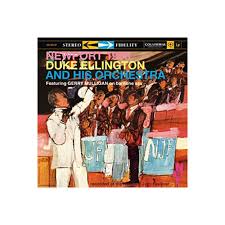 |
Newport 58 | July 3th 1958 | Columbia C2K 53584 | Happy Reunion Jazz Festival Jazz |
| The first live recorded example of Happy Reunion, an Ellington song that was to become Paul's ballad perfromance masterpiece, sounds almost like a work in progress when compared to later readings. Paul had played a number of Ellignton-Strayhorn ballads prior to this, but this was really the first to be written for Paul. Jazz Festival Jazz (a "panorama" as Duke says) was fairly dismissed by Quincy jones in hs contemporary review. The energy brought by Paul in the open segment is matched by the enthusiasm he inspires in the rythm section. A really swinging performance. | ||||
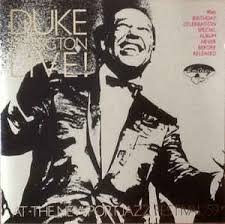 |
Live! At the Newport Jazz Festival '59 | July 4th 1959 | Verve / Emarcy 8420712 | Copout Extensions |
| Copout is a late 50s mid-tempo Gonsalves vehicle of the wailing interval variety. What makes this a standout is the rather darker complexion of the piece, especially when compared to more typical blues swing items like Blow by Blow. Originally, it was a much shorter piece (simply Copout) that ended with the brass triplets. Duke stretched it out for Paul to wail on, expressing his creative spirit. In amny ways, a more satisfying "wail" than '56. | ||||
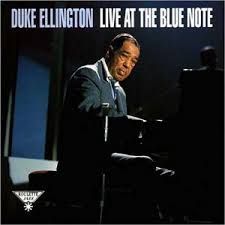 |
Live at the Blue Note | 9th August 1959 | Roulette 28637 | Newport Up |
| Newport Up is the third movement of the Newport Suite, premiered by Ellington at the Newport Jazz Festival in 1956. By the time we reach '59, the tempo has risen somewhat with the resulting fireworks are thrilling. The technique demostrated by Paul (Jimmy and Clark too) is a masterclass in up-tempo swing. The intimate nature of this club recording, with it's slightly unusual sound, is another strong draw. | ||||
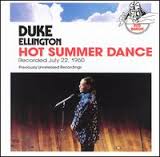 |
Hot Summer Dance | 22nd July 1960 | Red Barron 48631 | Laura |
| Paul answers a "heavy request" for this 1945 Dave Raskin tune on the wonderful Hot Summer Dance release. An ernest performanced, filled with the Gonsalves trademarks of lush warn tone and creativity. | ||||
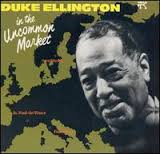 |
In the Uncommon Market | February 1963 | Pablo 2308247 | E.S.P |
| This is a gem, regardless of Paul's involvement. The studio recording of ESP can be found in the Private Collection while this seems to be the only live version to be recorded in it's brief sojourn in the Ellingon book. | ||||
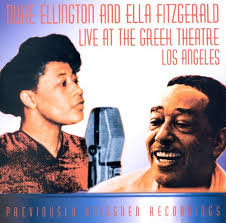 |
Live at the Greek | 23rd September 1963 | Status 1013 | In a Sentimental Mood |
| In a Sentimental Mood couldn't be a more perfect Paul Gonsalves ballad. This wonderful record, which also features Ella Fitzgerald, contains a surprisingly rare recording of Paul playing this tune. The arrangement is as recorded in the 1950's and which can be found on Volume 1 of the Private Collection. | ||||
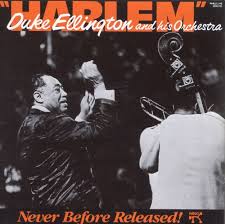 |
Harlem | 9th March 1964 | Pablo 2308245 | Happy Reunion |
| By the time of this recording, Happy Reunion had become a well polished ballad vehicle for Paul. This recording is perhaps the definative version we have (although the Copenhagen 1967 DVD version could also claim that honour). Happy reunion is a prime example of Paul's genius - he has the perfect blend of technique and feeling. Too much technique and it sounds robotic, just playing licks. Too much emotion and it becomes banal. There are moments in this perfromance where one can almost see into his very soul. | ||||
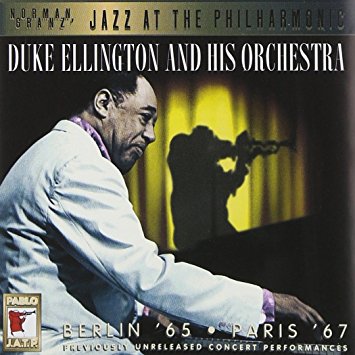 |
Berlin '65/Paris '67 | 3rd February 1965 & 10th March 1967 | Pablo 5304 | Chelsea Bridge |
| Possibly the definitive tenor Chelsea Bridge, certainly so for the big band setting. Taken from a live recording in Copenhagen, now available on DVD, Paul can be seen sleeping in his seat before being called to play this tune. Smatterings of nervous laughter from the audience, coupled with a "hang in there kid" from one the band (Sam?) as Paul rises to play, the viewer could be forgiven for wincing. Any fears are utterly obliterated from the first note, lush and soft, and Paul continues with a sincere passion and indescribable beauty. | ||||
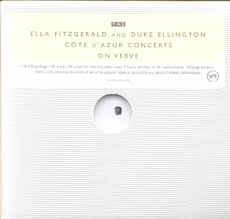 |
Cote d'Azur Concerts on Verve | 26th & 29th July 1966 | Verve 5390332 | Chelsea Bridge West Indian Pancake Cotton Tail The Trip Rehearsal |
| An 8-disc box-set of the 1966 Cote d'Azure concerts with duke and Ella is an enormous treasure. One of the treats of this box-set is disc 8, where the listener can hear sections of a rehearsal session during which Paul has a discussion with Duke about the arrangement of Blue Fuse Number 1. The Trip is a very seldom heard number (this may be the only recorded example), in which Paul his allowed freedom to explore his more avant garde side. This collection is packed with excellent examples of Paul's playing, Chelsea Bridge, West Indian Pancake and Cotton Tail are perhaps the highlights - trading 4's with Ella on Cotton Tail is simply stunning. | ||||
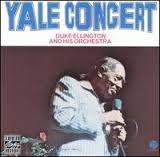 |
Yale Concert | 26th January 1968 | Concord / Decca / Fantasy | Up Jump |
| Up Jump is a fast tempo 3-minute length feature for Paul, moving away from the multi-chorus blues wailing intervals he'd been forced to play for so many years. Duke famously introduces the song as "Tenor Saxophonic Calisthenics", informing the audience in typically Ducal style that Paul "overindulges himself in the most overindulged form of overindulgence". Each performance ends with a Gonsalves cadenza, the Yale version perhaps being the longest and most exciting example on record. | ||||
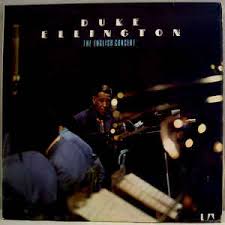 |
The English Concert | 22nd October 1971 | Beat Goes On BGOCD 451 | Happy Reunion |
| The third iteration of Happy Reunion comes late in the careers of Paul and Duke. This time the tempo is set much slower, lending an almost funereal quality to proceedings that acts to make something of a lie of title. | ||||
